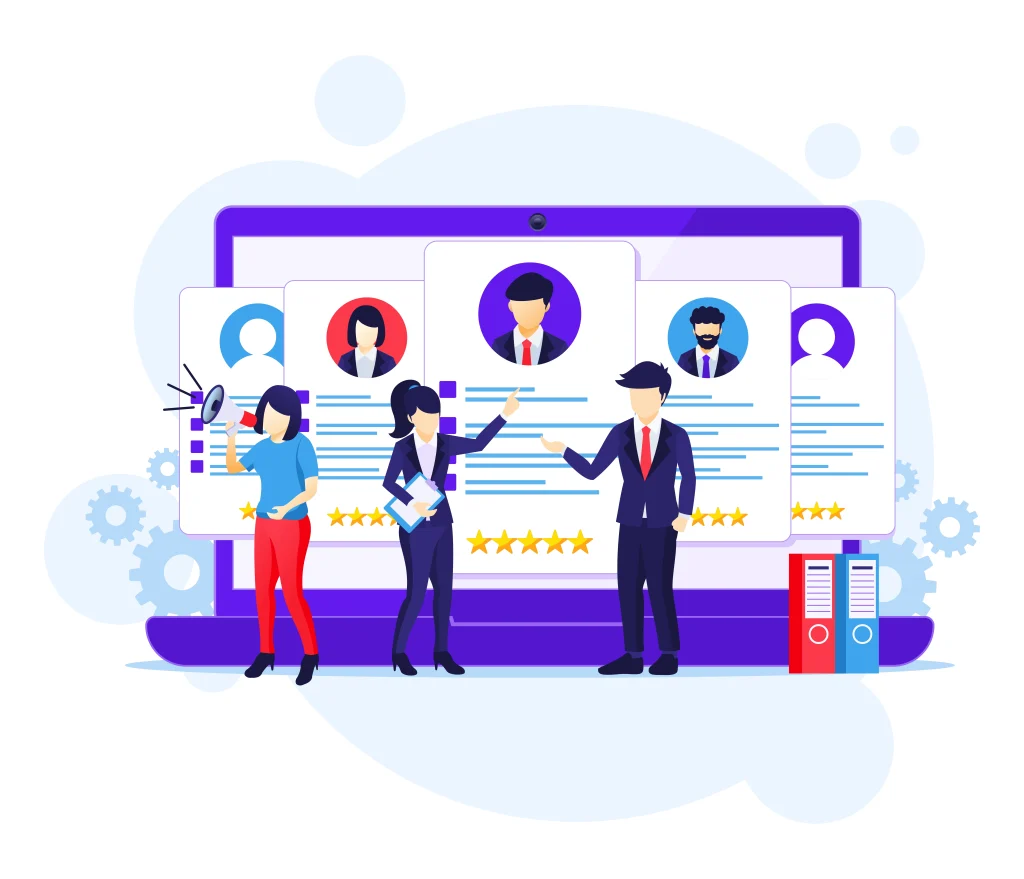In today’s competitive job market, attracting and retaining top talent is more challenging than ever. Talent acquisition software has evolved significantly, offering innovative solutions to streamline hiring processes and improve candidate experience. This article explores the best practices in talent acquisition software that are shaping the future of recruitment.

Artificial Intelligence (AI) and machine learning are revolutionizing talent acquisition. These technologies enhance the recruitment process by automating repetitive tasks, such as resume screening and interview scheduling. AI algorithms can analyze vast amounts of data to identify the most suitable candidates based on skills, experience, and cultural fit. This not only speeds up the hiring process but also reduces human bias, ensuring a fairer selection process.
Best Practice: Implement AI-driven tools that can scan resumes and rank candidates according to predefined criteria. Use machine learning models to continuously improve the accuracy of candidate matching.
A positive candidate experience is crucial in today’s job market. Candidates are more likely to accept a job offer if they have a smooth and engaging recruitment process. The software now includes features such as personalized communication, real-time application status updates, and user-friendly interfaces to enhance the candidate experience.
Best Practice: Use software that provides a seamless and interactive application process. Ensure that candidates receive timely feedback and updates throughout their application journey.
Data analytics plays a pivotal role in modern talent acquisition. Recruiters can use data to track the effectiveness of their hiring strategies, understand trends, and make informed decisions. Talent acquisition software offers robust analytics tools that provide insights into key metrics such as time-to-hire, cost-per-hire, and source of hire.
Best Practice: Integrate data analytics into your recruitment strategy. Regularly analyze hiring data to identify areas for improvement and optimize your recruitment process.
Promoting diversity and inclusion in the workplace is not just a moral imperative but also a business advantage. The software can help organizations attract a diverse talent pool by minimizing biases in job descriptions and during the selection process. AI-driven tools can ensure job postings are inclusive and free from gendered language, and can anonymize candidate profiles to prevent unconscious bias.
Best Practice: Adopt software that supports diversity and inclusion initiatives. Regularly review your hiring practices to ensure they align with your diversity goals.
Integration with other HR systems is essential for a streamlined recruitment process. Talent acquisition software that seamlessly integrates with HR management systems, payroll, and performance management tools ensures a smooth transition from candidate to employee. This integration reduces administrative burden and improves data accuracy.
Best Practice: Choose the software that offers robust integration capabilities with your existing HR systems. Ensure that data flows seamlessly between different platforms.
The rise of remote work has necessitated changes in recruitment practices. Talent acquisition software now includes features that support remote hiring, such as virtual interviews, digital onboarding, and remote assessment tools. These features enable organizations to expand their talent pool beyond geographical boundaries and attract candidates from diverse locations.
Best Practice: Utilize software that supports remote hiring processes. Ensure that your recruitment tools facilitate virtual interactions and remote onboarding.
A strong employer brand attracts top talent and sets an organization apart from its competitors. The software can help build and promote a compelling employer brand by showcasing company culture, values, and employee testimonials. This can be done through career sites, social media integration, and targeted recruitment marketing campaigns.
Best Practice: Leverage your talent acquisition software to enhance your employer branding efforts. Create engaging content that highlights your company’s unique attributes and values.
Keeping candidates engaged throughout the recruitment process is crucial to prevent drop-offs and maintain interest. The software offers tools for continuous candidate engagement, such as automated follow-ups, personalized messaging, and candidate relationship management (CRM) features. These tools ensure that candidates remain informed and interested in the opportunity.
Best Practice: Implement a candidate relationship management system to maintain regular communication with candidates. Use automated tools to send personalized messages and updates.
Skills-based hiring focuses on a candidate’s abilities rather than their educational background or previous job titles. The software can facilitate skills-based hiring by offering assessments and tools that evaluate candidates’ skills and competencies. This approach helps identify candidates who are the best fit for the role, regardless of their traditional qualifications.
Best Practice: Incorporate skills assessments into your recruitment process. Use talent acquisition software to evaluate candidates based on their demonstrated abilities.
Compliance with employment laws and data security are critical considerations in talent acquisition. Talent acquisition software must ensure that recruitment practices comply with relevant regulations, such as GDPR and EEOC guidelines. Additionally, robust security measures are necessary to protect candidate data from breaches and unauthorized access.
Best Practice: Choose software that prioritizes compliance and data security. Regularly review and update your recruitment practices to adhere to legal requirements.
The evolving landscape of talent acquisition software presents numerous opportunities for organizations to enhance their recruitment processes. By leveraging AI and machine learning, enhancing candidate experience, utilizing data-driven insights, promoting diversity and inclusion, and ensuring integration with other HR systems, companies can attract and retain top talent effectively. Embracing these best practices will position organizations at the forefront of talent acquisition in 2024 and beyond.
Employwise, a comprehensive talent acquisition software, exemplifies these best practices by offering AI-driven tools, enhancing candidate experience, supporting diversity, and integrating seamlessly with other HR systems. By adopting it, organizations can navigate the complexities of modern recruitment and build a strong, diverse, and talented workforce.




